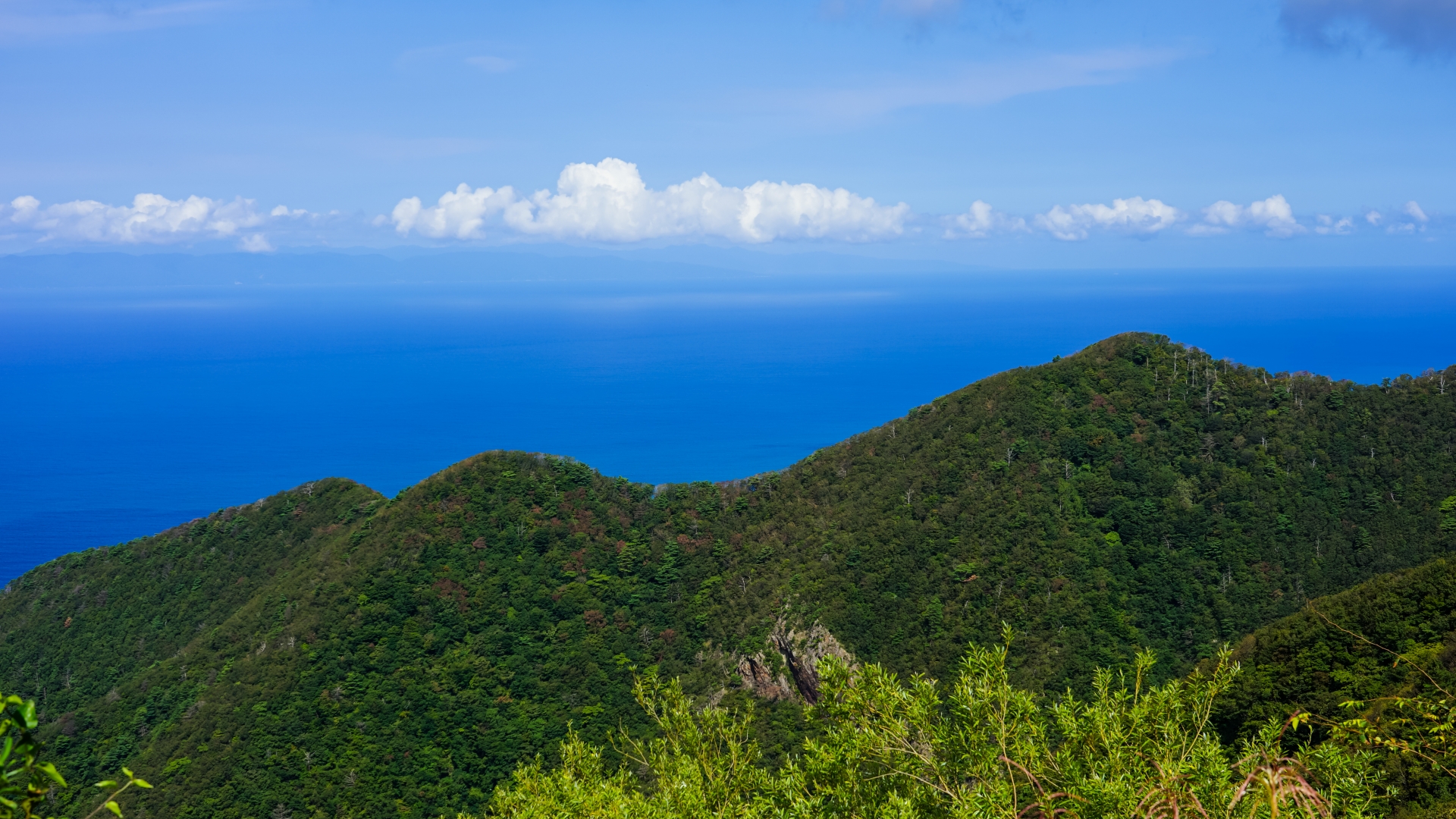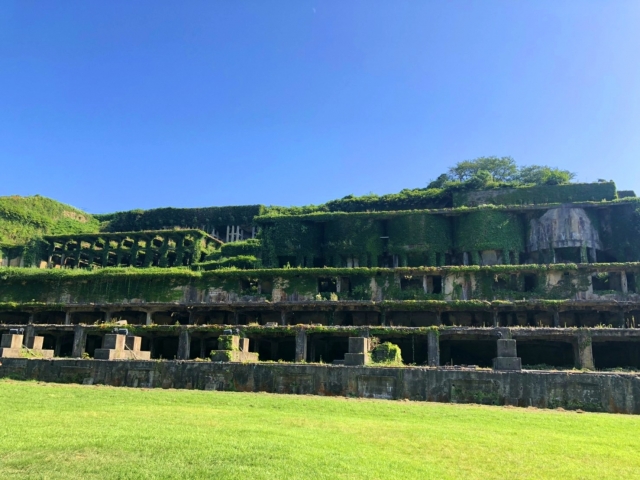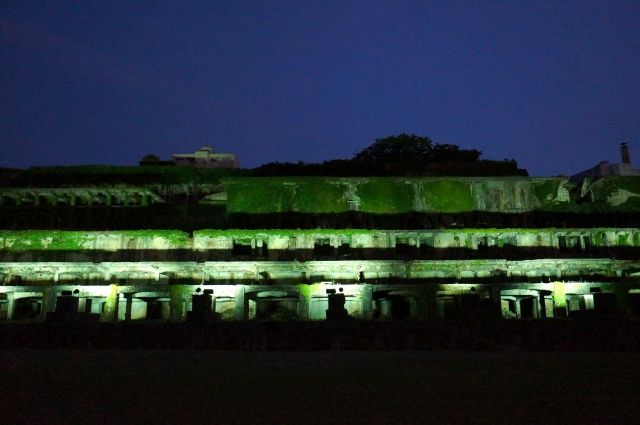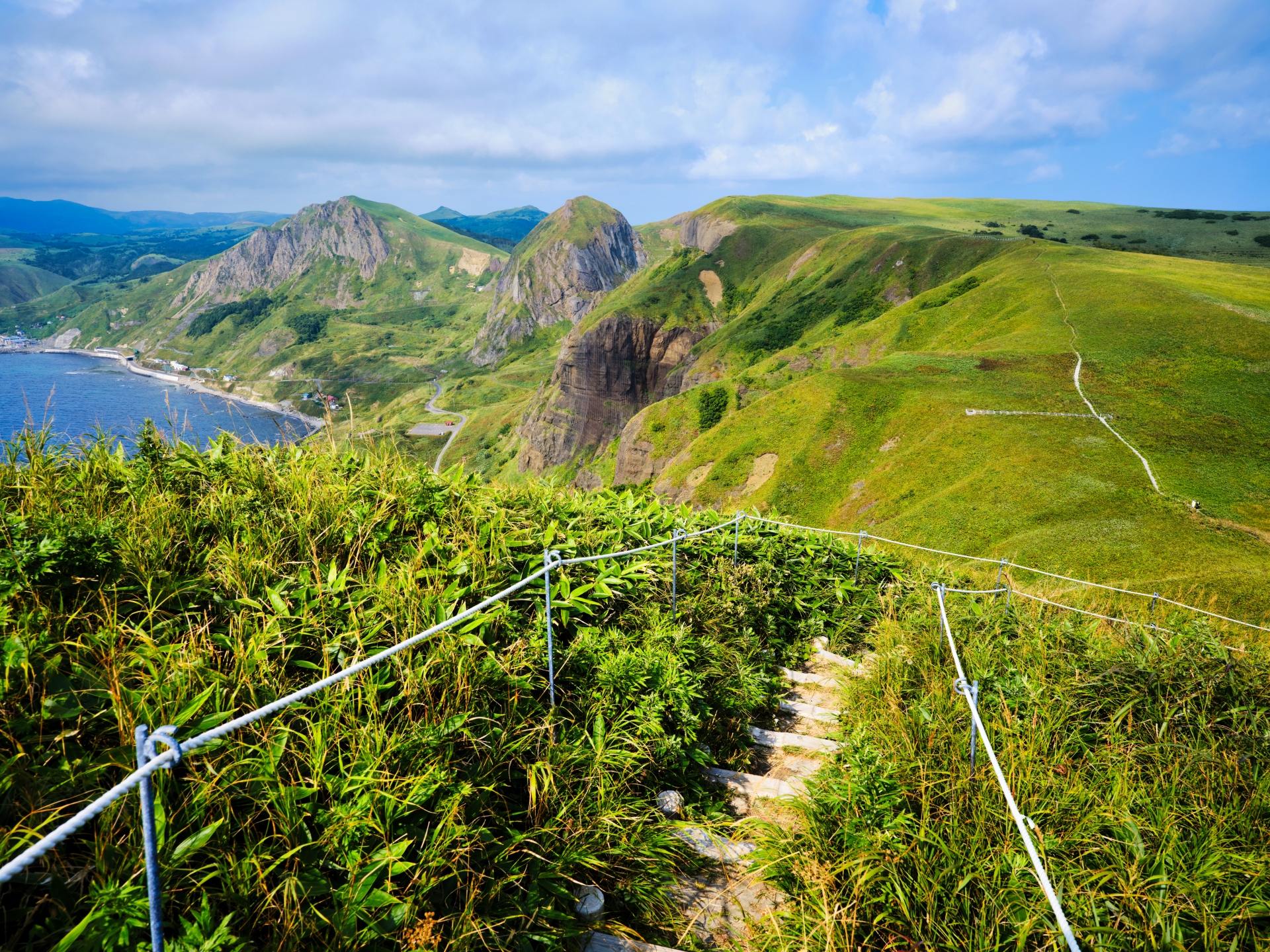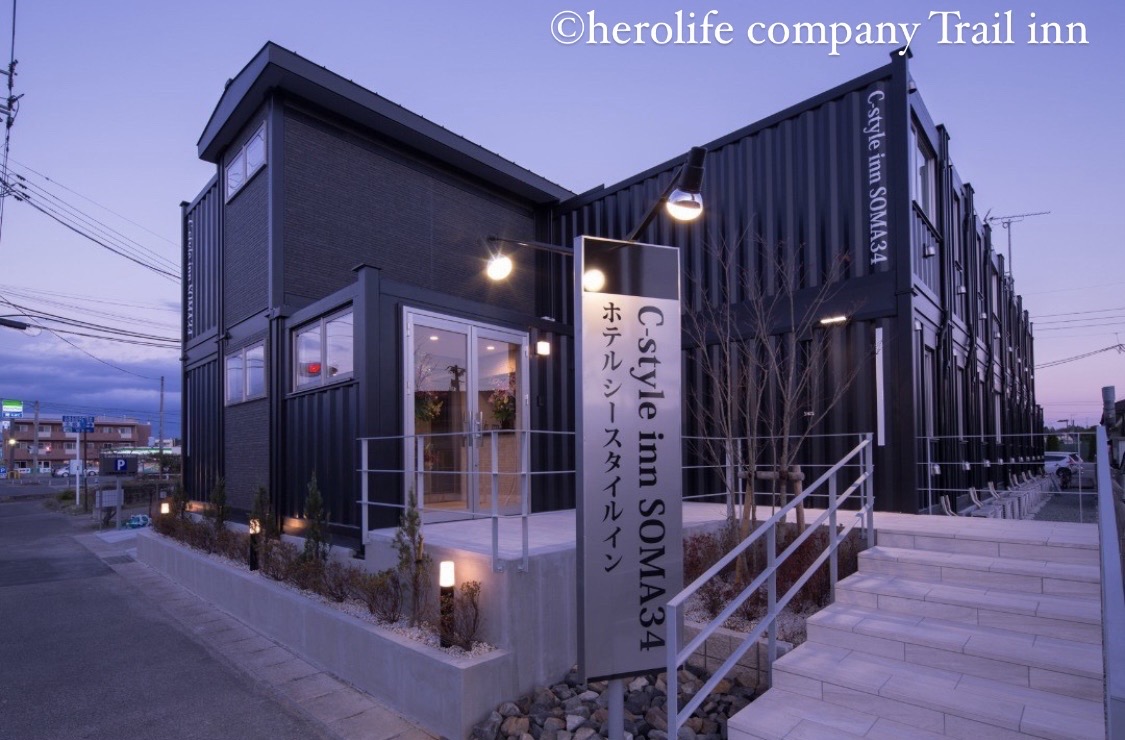Located in the Eastern Sea of Japan, Sado Island (佐渡島, Sadogashima) is Niigata’s best-kept secret. Sado Island is a beautiful island with beautiful beaches, rich nature, and old temples and shrines.The history of the large island stretches as far back as the 8th century as Japan took direct control of the area. While you explore the island it’s easy to feel as if you stepped into another world. Explore the gold mines and ruins to get a sense of the island’s role in Japan’s later development. The remoteness of the island made it an ideal area to exile criminals and other undesirables from the mainland. The exiles allowed for Sado Island to develop its own distinct culture and accent and traces of this mixture of culture and religion are still noticeable today. Reachable only by ferry, you’ll likely want to take your time exploring the island. Here are the top ten things to do on Sado Island.
How to get to Sado Island
Sado island is located about 50km off the coast of Niigata Prefecture and travelling to Sado Island can only be done by ferry. You can either take the ferry from Niigata Port to Ryotsu Port on the eastside of the island (all year round) or from Naoetsu Port to Ogi Port on the southern part of Sado Island.
Ferry from Niigata to Ryotsu
- Car ferry: 2 hours 30 minutes, ¥2,600 pp + ¥17,500 for the car
- Jetfoil: 1 hour, ¥6,700 pp
- From Tokyo; take the Joetsu Shinkansen to Niigata Station (2 hrs, ¥10,500, covered by JR Pass) or the (overnight) bus (5.5 hrs, ¥3,000 – ¥6,000). From Niigata Station it is a 15 min bus ride to the ferry terminal).
Ferry from Naoetsu to Ogi
- Jetfoil: 70 min., ¥6,900 pp
- No service in winter (Nov. – Apr.)
- From Tokyo; take the Hokuriku Shinkansen to Joetsu Myoko Station (~2 hrs, ¥9,000 covered by JR Pass) and travel to a local train to Naoetsu Station (15 min, ¥340, not covered by JR Pass).
Getting around Sado Island
The best and most convenient way to get around Sado Island is by driving a (rental) car. There are no trains on the island and with infrequent and slow busses, driving yourself around is just much easier. There are many car rental places near the port and the road conditions are good along the main roads.
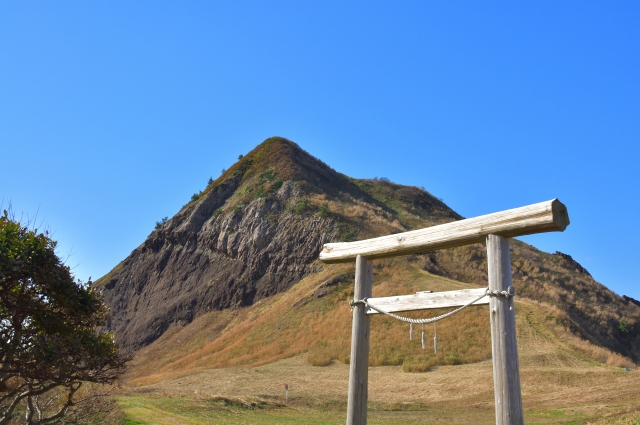
1. Sado Gold Mine
Called the sado kinzan in Japanese, the gold mines on the island were once the most productive mines in all of Japan. The mines produced nearly 400 kg of gold as well as smaller amounts of copper and silver. Throughout the Edo Period, the mines served as a major source of revenue for the Tokugawa shogunate. Mine operation ceased in 1989, but it’s currently open to the public for visitors to explore. Some courses lead through the mining tunnels. The first course takes you through the Edo period tunnels with life-sized animatronic miners working the mines. The second course leads you through the newer mines which were built during the Meiji Period.
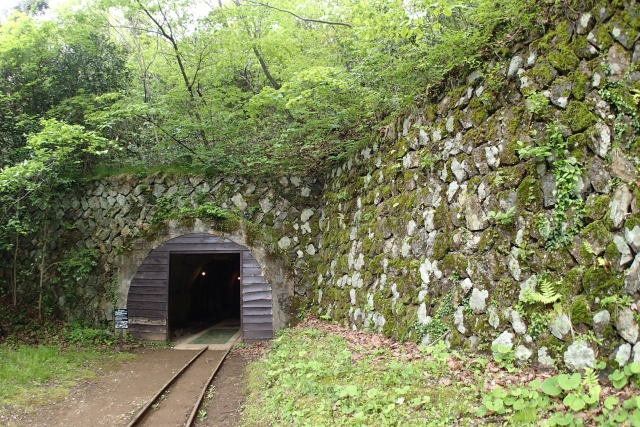
Sado Gold Mine
8am – 5.30pm (April to October)
8am – 17pm (November to March)
Admission fee ¥900 for either course, ¥1,400 for both courses
2. Toki Forest Park
The national bird of Sado Island, the crested ibis or toki, was once on the verge of extinction. The Toki Forest Park serves as a conservation park and museum where visitors can see these rare birds and learn more about the efforts to increase their population. The bird suffered from overhunting and habitat loss during the Meiji Period, by 1981 the last few toki left on the island were captured to be the start of a breeding program. The first program failed in 2003 when the last native bird died in captivity but since 2008, the park has been able to reintroduce toki back into the wild. Today several hundred toki are living in the wild again.
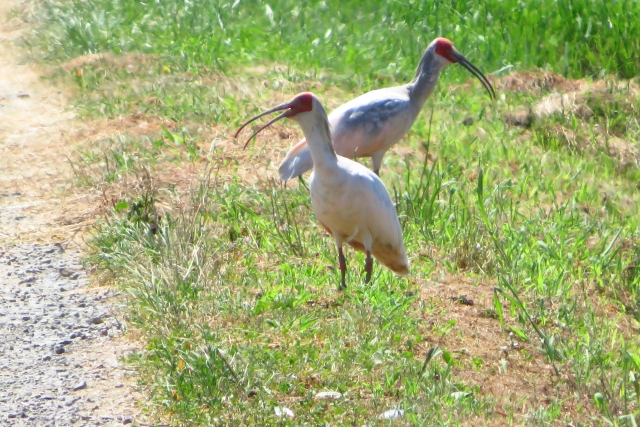
Toki Forest Park
8am – 5.30pm
Admission fee ¥400
3. Kitazawa Fuyu Senkojo
Many visitors love exploring the depths of Japan for the inspiration of their favorite Ghibli movies. The Ghibli movie Laputa: Castle in the Sky was inspired by the ruins of Kitazawa Fuyu Senkojo. Only a few minutes from the gold mines by car, Kitazawa Fuyu Senkojo once manufactured copper. The way the greenery entangles itself around the large building is reminiscent of a mystical forgotten castle. The ruins are illuminated in the evening from 7pm-9pm during the tourist season (from spring to autumn). The colorful lights, combined with the starry backdrop will make anyone feel as if they’re in the middle of a fairy tale.
4. The Tarai Bune Rides
Another activity that feels like it took a page from a Studio Ghibli adventure is the Tarai bune boat rides. Participants are seated in a wooden boat that’s shaped like a large barrel. You’ll be able to get an up-close and personal look at the surrounding turquoise water of Sado Island. The most popular place to do experience the tarai bune boats is near Ogi Port. For ¥500 you can make a short boat tube experience between 8am and 5pm, depending on the season. Aside from providing an unforgettable experience the boats are often used to catch abalone and mollusks.
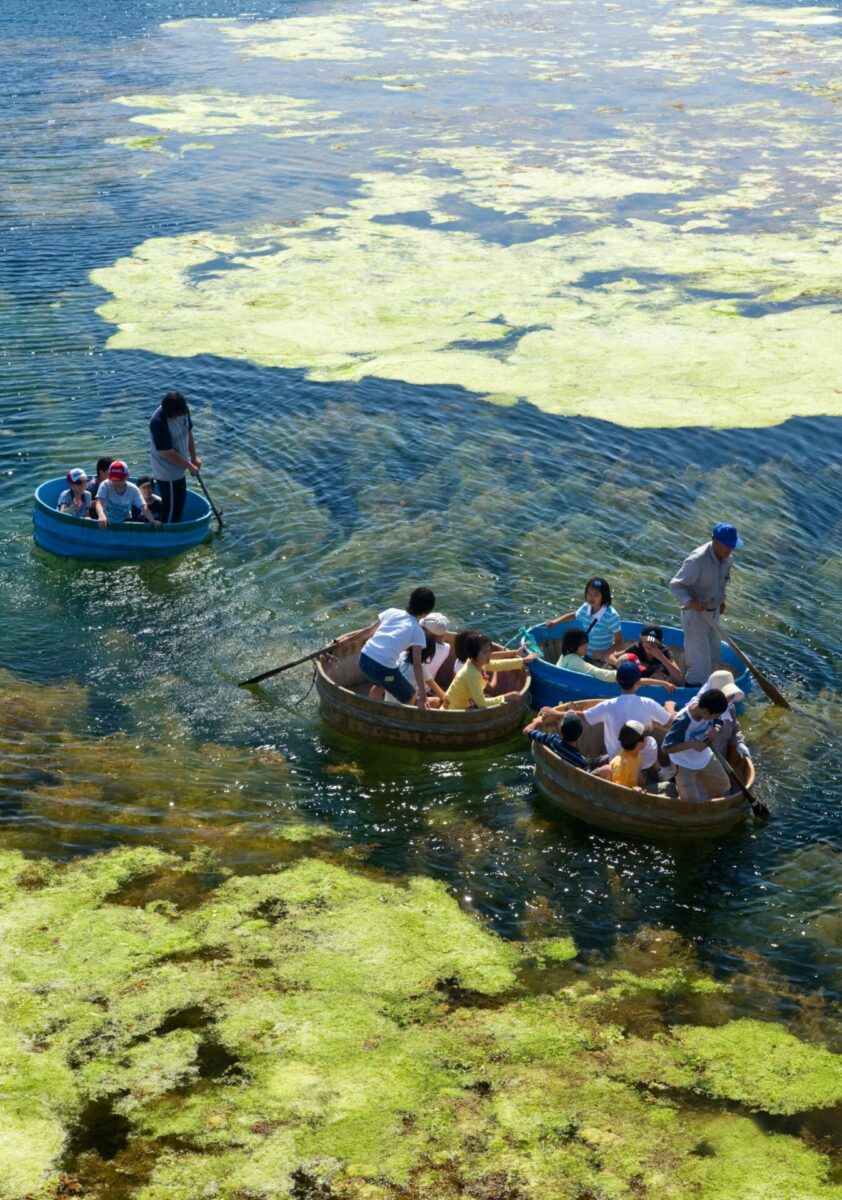
5. Futatsugame Beach
The northern tip of Sado Island is home to Futatsugame beach, and it’s considered one of the top 100 sea bathing spots in Japan. The offshore islet is said to resemble two turtles. Spend a day relaxing in the clearest waters in Western Japan. If you’d like a little more adventure, there are hiking trails that take you up the cliffs for a gorgeous view of the sea.

6. Chokokuji Rabbit Statue
The deep history of Sado Island can be felt all over Japan. The Chokokuji Temple was founded by Kobo Daishi, the same monk who founded the Koyasan Temple in Wakayama Prefecture. The temple is well known for its peonies, it recently gained popularity for its 20-foot tall Rabbit Kannon. The statue is a large white rabbit with an image of Kannon, the goddess of mercy, sculpted onto its chest. The priest had it constructed to honor the large community of friendly domestic rabbits in the area that help keep the temple’s lawn nicely trimmed.
7. Shukunegi Fisherman Village
Ogi town doesn’t see many visitors these days, but we recommend stopping by this traditional village while on Sado Island and make a short detour to Shukunegi Fisherman Village as well. There are about 200 houses connected by small alleys and passageways throughout the town. The 200-year-old houses were once homes to the fishermen in the village who managed to provide fish for the whole island. Few houses are inhabited today. The occupied homes show some signs of life with potted flowers, and colored fruits to brighten up the deserted landscape.
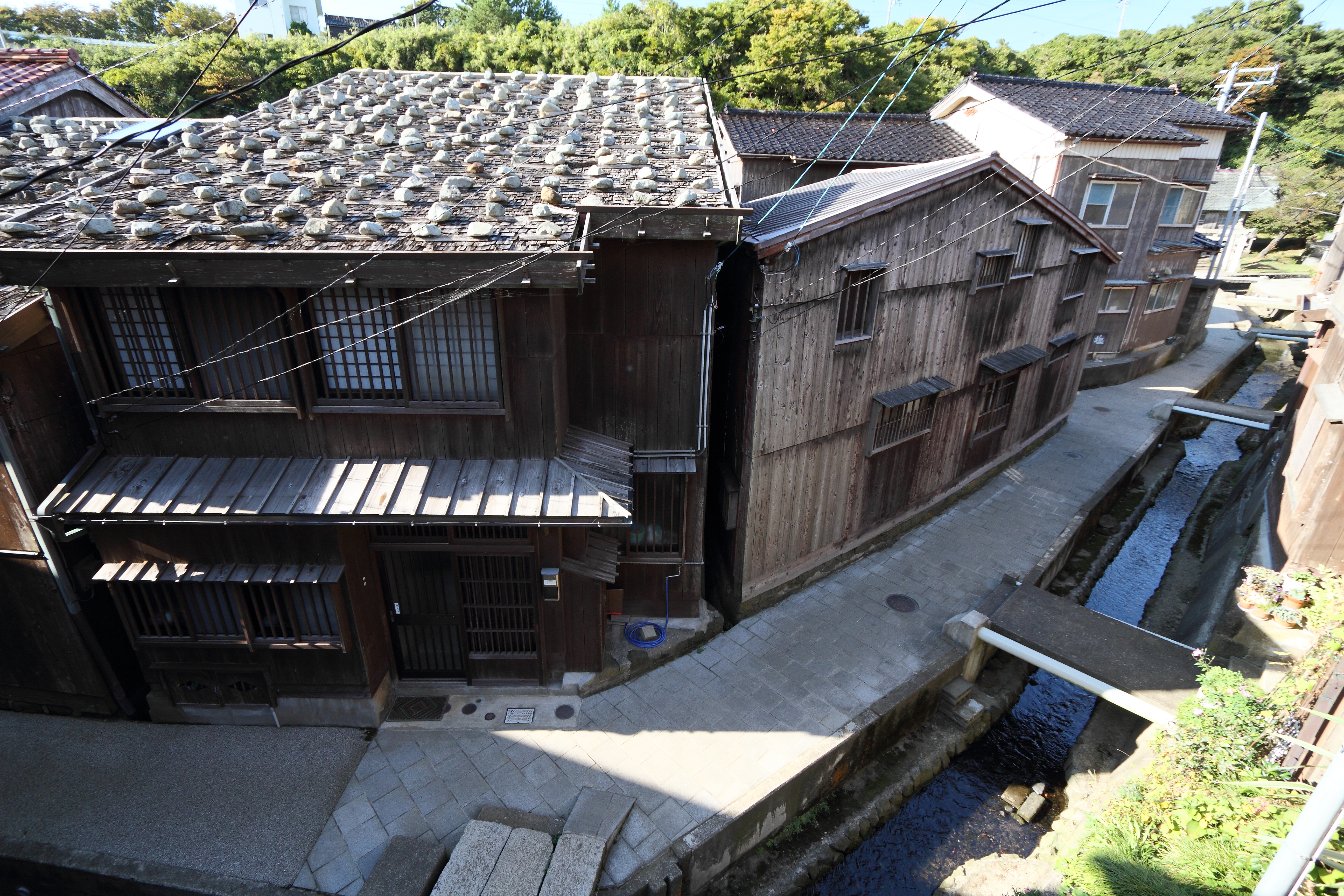
8. Sado History Museum
The Sado History Museum reenacts the historical events of the local legends on the island. The use of robots and animatronic puppets helps visitors to really picture life in feudal Japan as well as bring to life some of the historical figures associated with the island. The main exhibits focus on three important exiles to Sad – Emperor Juntoku, Buddhist monk Nichiren, and Zeami.
Sado History Museum
8.30am – 5pm (Apr. – Nov.)
9am – 4.30pm (Dec. – Mar.)
Admission fee ¥800
9. Hokusetsu Sake Brewery
Sake is an important part of Japanese culture and history. The Hokusetsu Sake Brewery boasts a long history of top-quality sake making of more than a century and a half old. The brewery is home to the sake used in Michelin-starred Nobu restaurants all over the world. It attracts many celebrities to the charming building every year. There are countless shelves of sake bottles for visitors to explore. The brewery is a must-see for alcohol enthusiasts. Visitors can take a free sake (tasting) tour to learn more about the sake brewing process and of course taste the famous Japanese drink (reservation required). From May until October you can also join a free factory tour.

10. Senkakuwan Bay
The coastal landforms of Sado Island are truly a sight to take in. The quasi-national park Senkakuwan Bay is made up of five bays spanning three kilometers in the Aikawa district. The fifth bay, Ageshima Fjord, offers sweeping views of the area and the eroded cliffs. There is also a saltwater aquarium housing fish from the coastal waters, along with stalls and a canteen.
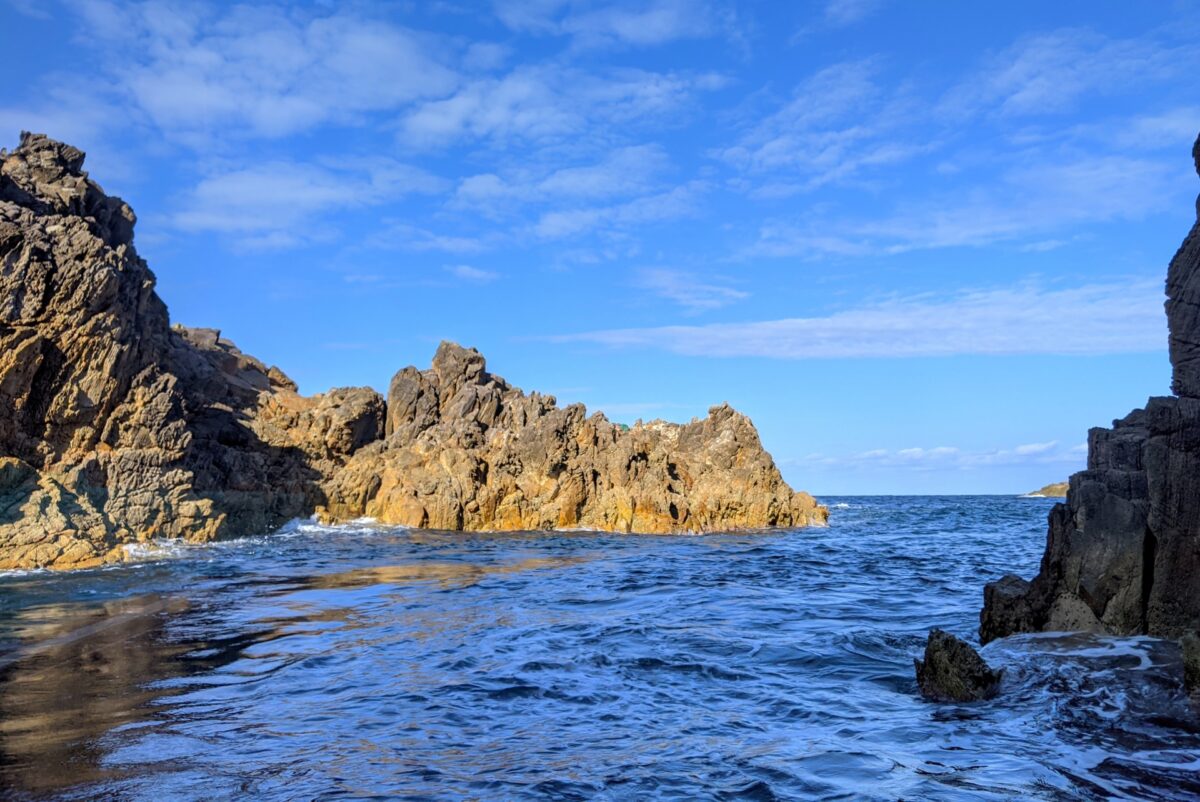
Where to stay on Sado Island?
There are quite a few accommodation options available on Sado Island dotted around the island. We recommend to stay near Sado city, so that you can easily explore both sides of the island.
- Hotel Familio Sadoaikawa – Spectacularly located on the a cliff, facing the sea, this hotel is a great place to relaxed and watch the sunset.
- Guest Villa on the BI-CHI – A beach front villa with free parking space available
- Rosencat – a lovely little home stay with spacious rooms and nice restaurants nearby.
Sado Island is a well-kept secret of Japan, offering historical culture along with amazing views from coast to coast. The spectacular scenery is a surprise to many. Why don’t you visit here for your next vacation?
Follow us on Instagram, Facebook and Twitter for more travel inspiration. Or tag us to get featured!
Happy traveling!
Other articles you might like

Jamila Brown is a five-year resident of Japan, teaching in the day and writing at night. She enjoys movies, reading, cosplaying, and eating good food in her downtime.
This post may contain some affiliate links. When you click through and make a purchase we may receive some commission, at no extra costs to you.
